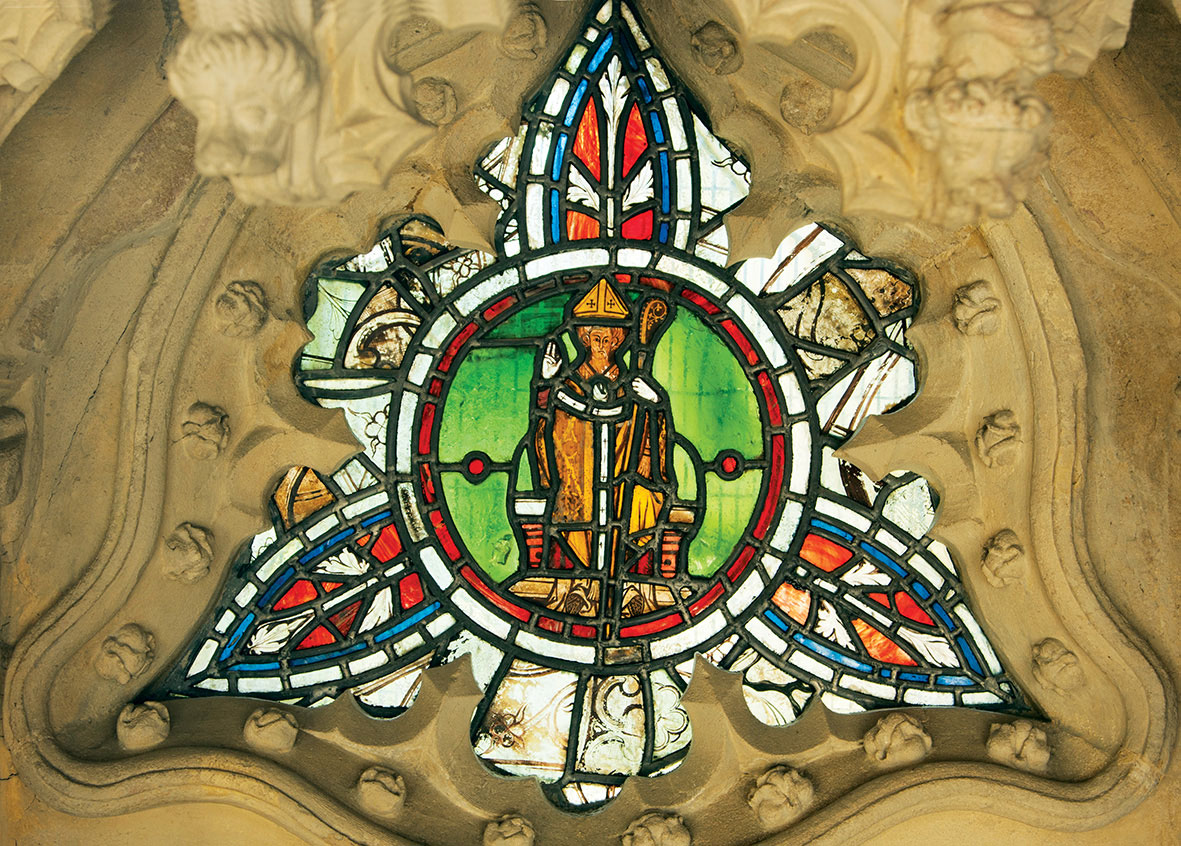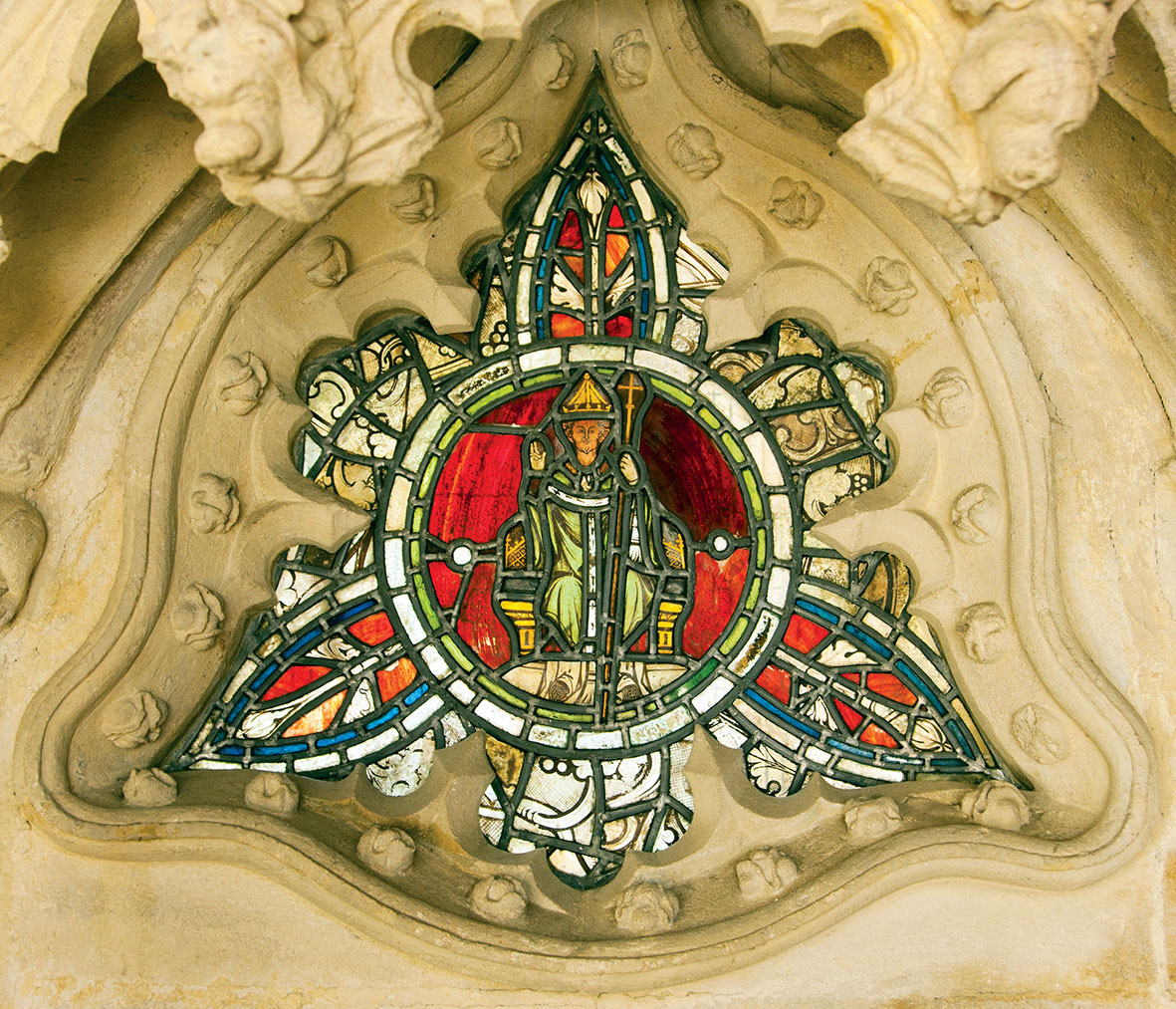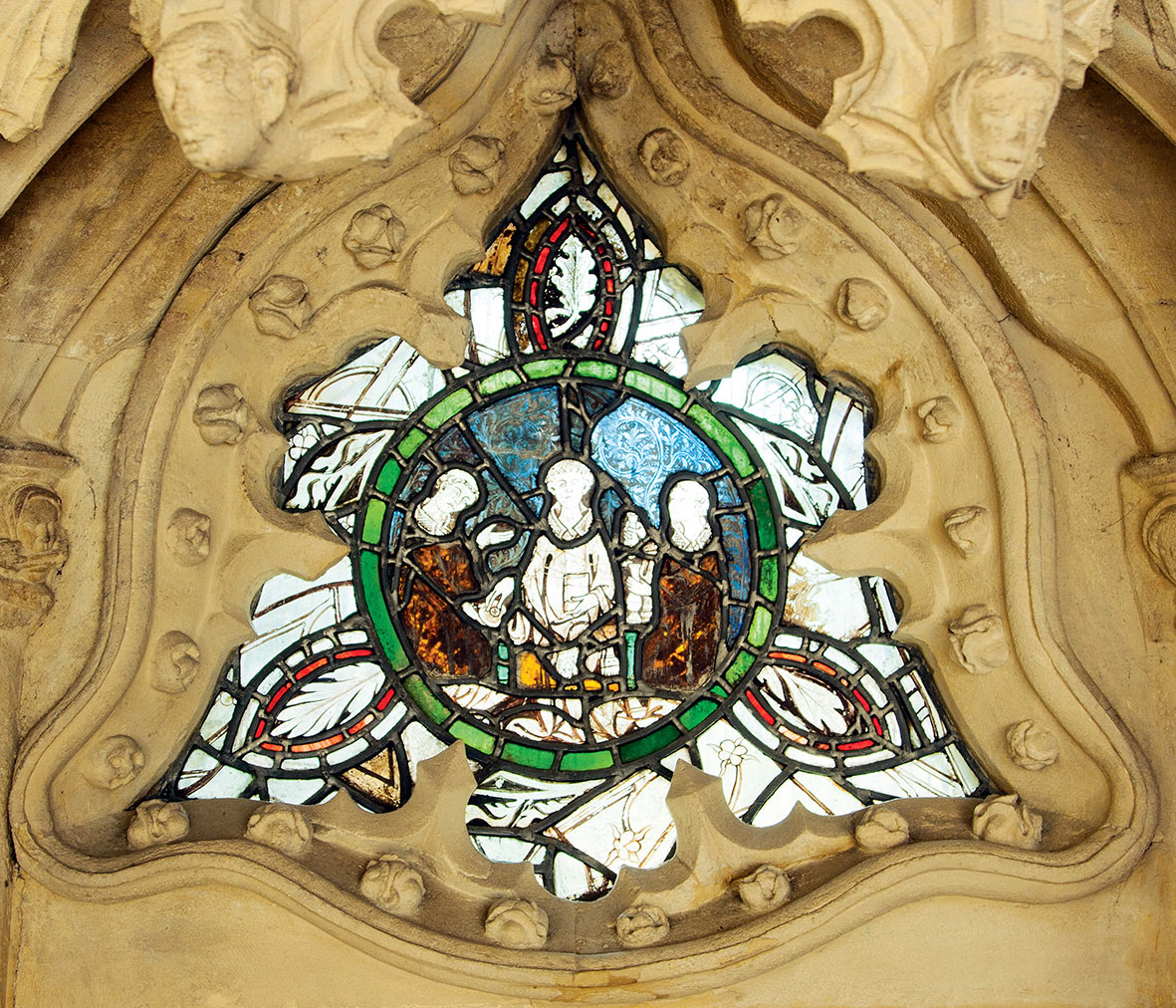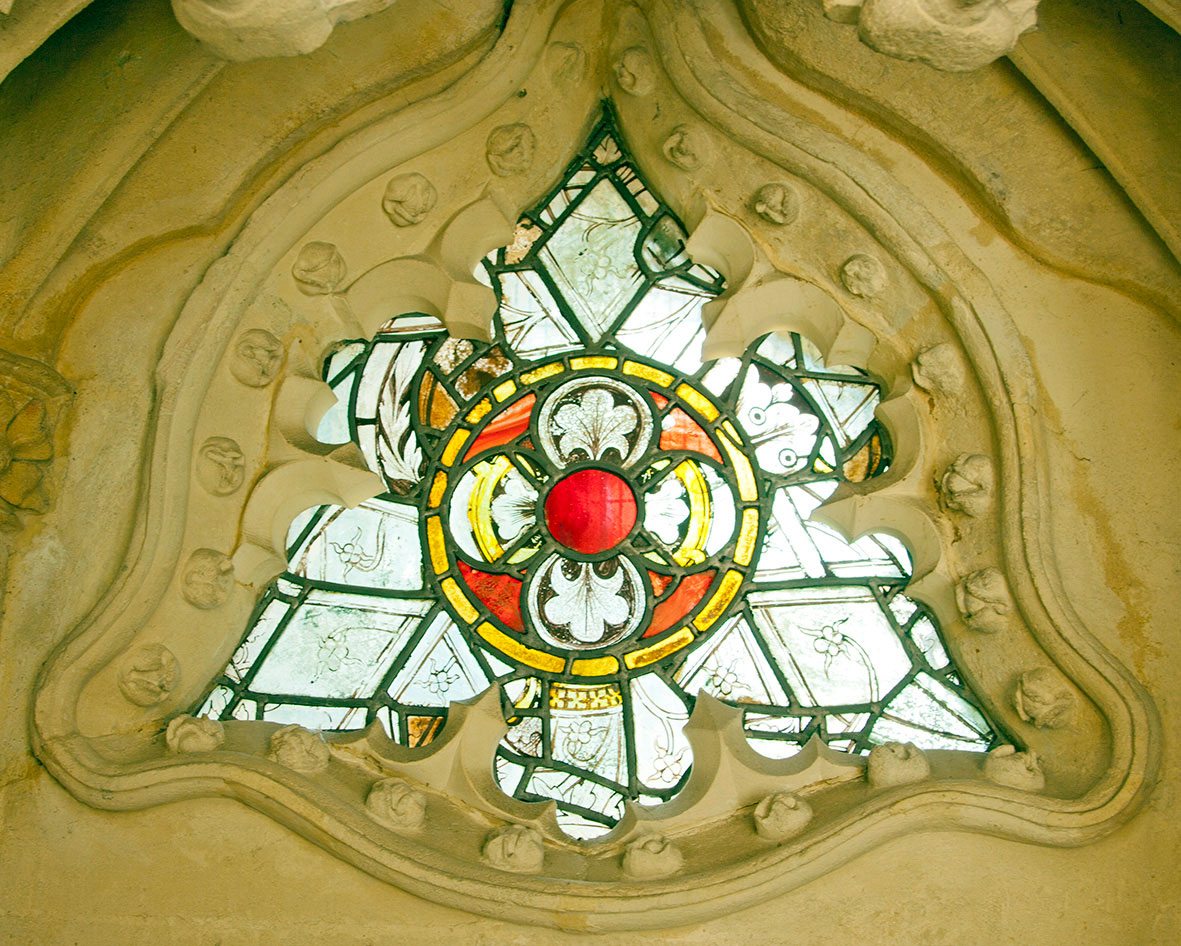Abbey Treasures
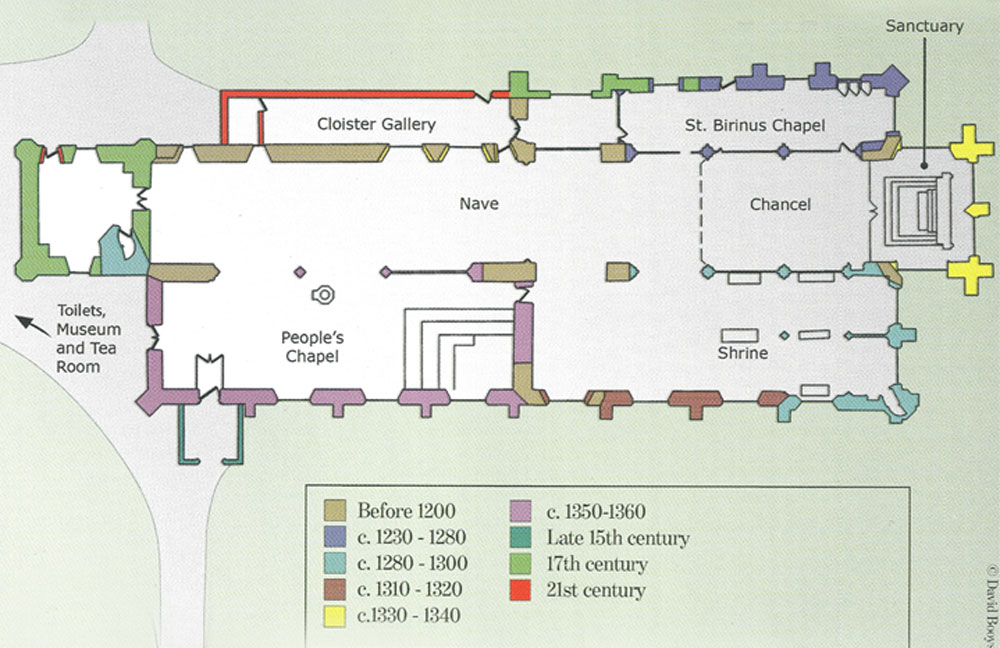
Below are brief descriptions of the key historical features of Dorchester Abbey. These are described in more detail in our guidebook (available for purchase at the Abbey when you visit) and on the read more pages.
You can also take a look around the Abbey with our virtual tour.
The People’s Chapel
This was added to the Abbey c.1340 for use as a parish church.
It probably replaced an earlier building whose upper story was on the same level as the recess in the wall.
The raised altar stands over the crypt and in front of the 14th century wall paintings of the crucifixion.
The tomb of Sarah Fletcher ‘martyr to excessive sensibility’ lies next to original fragments of the medieval floor tiles.

The Font
Cast about 1170, this is one of the best preserved lead fonts in England, and the only one belonging to a monastic church to survive the Reformation.
It features 11 figures (presumably the apostles with Judas left out!) seated under an elaborate arcade. Read more here.

The East Window
The Great East Window is a masterpiece of medieval and Victorian craftsmen.
The strength of the central pillar (added to reinforce the tracery) stands in stark contrast to the delicate and airy tracery and colourful glass.
Much of the glass is early 14th century and was collected from other windows in the church about 1814. The rose window was designed by William Butterfield who restored the church in 1846-53.

The Jesse Window
The window on the north wall of the chancel is a Tree of Jesse, a unique form of ‘multi-media’ combining tracery, sculpture and stained glass (all 14th century) in a single theme.
It shows how Christ was descended from King David’s ancestor Jesse, the surprisingly natural figure apparently slumbering on the windowsill at the foot of the tree.
The figure of Christ at the top was severely damaged in Cromwellian times.
Sedilia
Against the south wall of the chancel are the 14th century sedilia, the three seats reserved for the Bishop and senior clergy. No longer used, they have magnificent canopies decorated with fine tracery and small figures of saints. Inside are three tiny round windows, decorated with 3-petal flowers and a ball, and filled with stained glass, one representing the distribution of the sacraments at the Eucharist. Also there are small but very realistic carvings of the seven deadly sins, presumably meant as a constant reminder of the temptations of this world.
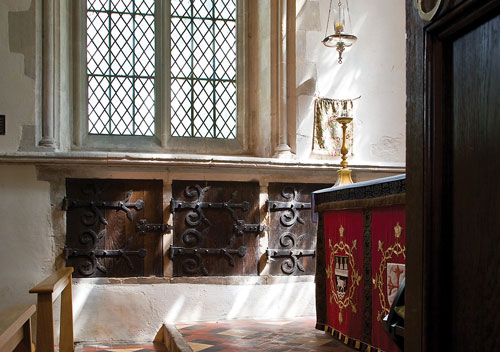
St Birinus Chapel
In the late 13th century a new chapel was built along the north wall of the chancel. This is now used for private prayer and for the 8.15 am Holy Communion service on Sunday mornings. In the centre of the east window, itself a fine example of the strongly geometric designs typical of Early Decorated tracery, is the earliest piece of glass in the Abbey (ca. 1250) depicting Birinus being blessed by Archbishop Asterius of Milan before his mission to Britain.
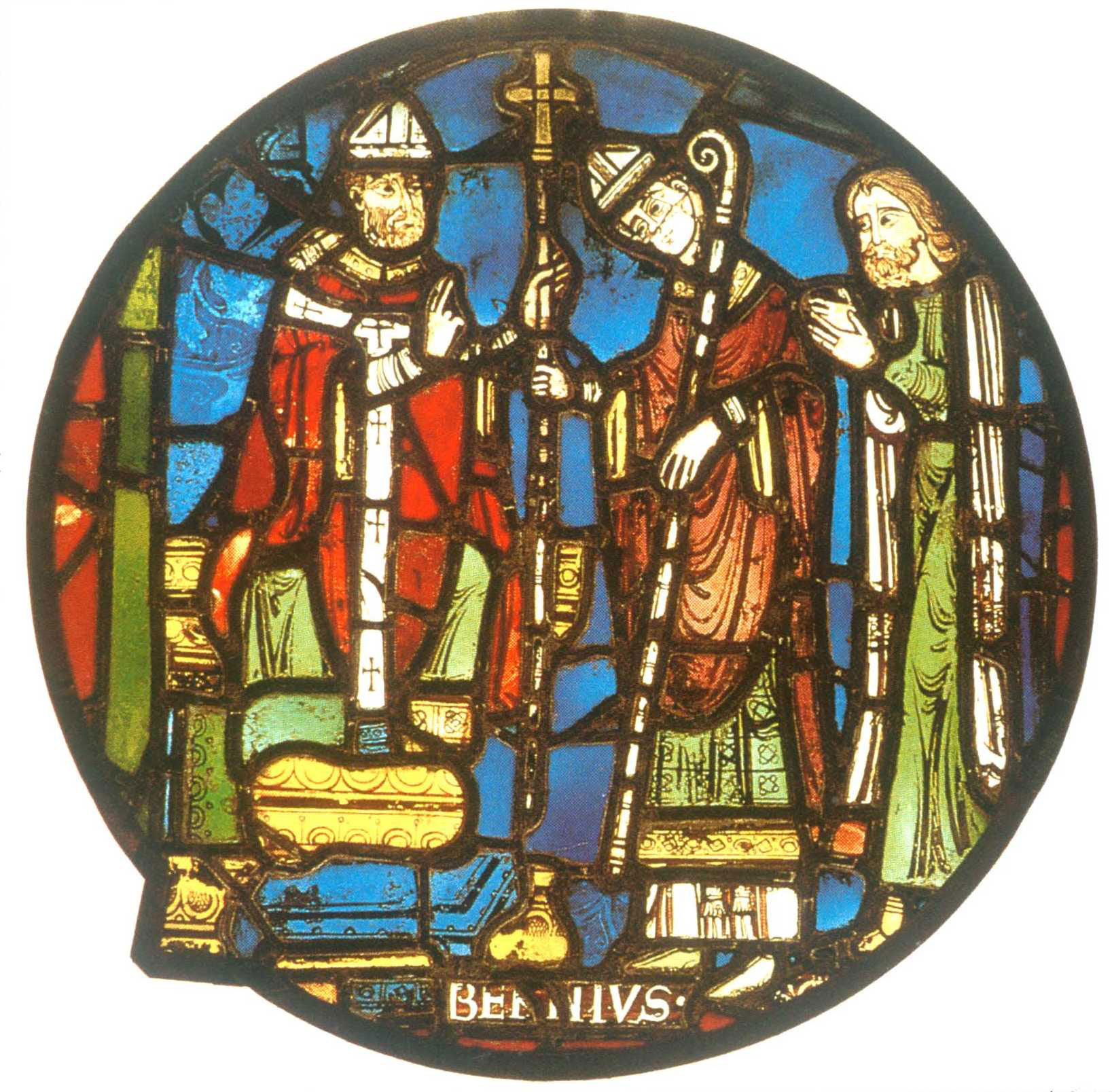

St Birinus’ shrine
The original canopied shrine was demolished in 1536 but most of the intricately carved vaulting was found in a blocked-up doorway in the 1870s. This was reassembled in the rather severe 1964 reconstruction of the shrine in the Lady Chapel.
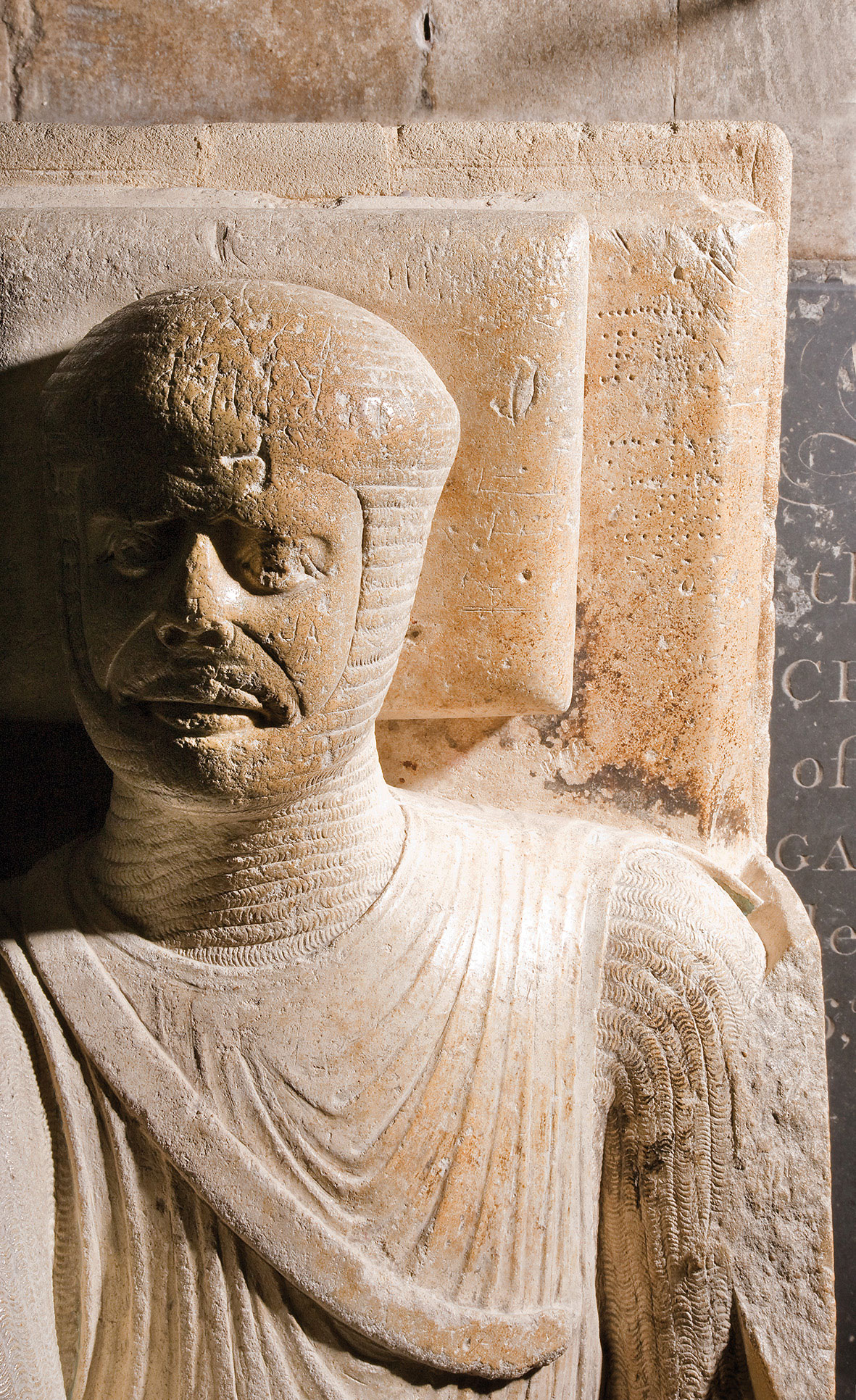
The Effigy
Although he cannot be identified with certainty, it seems most likely that this knight is William de Valance the Younger (died 1282), and not Sir John de Holcombe (died 1270) as was formerly believed. His effigy is one of the best pieces of 13th century funerary sculpture in England. Unusually life-like, in the act of drawing his sword, with every detail of his clothing and armour there for you to see and touch, this knight probably went on one of the Crusades to the Holy Land. When first made the sculpture would have been brilliantly coloured in blue, red and green, and traces of these colours can still be seen in the folds of the cloak.
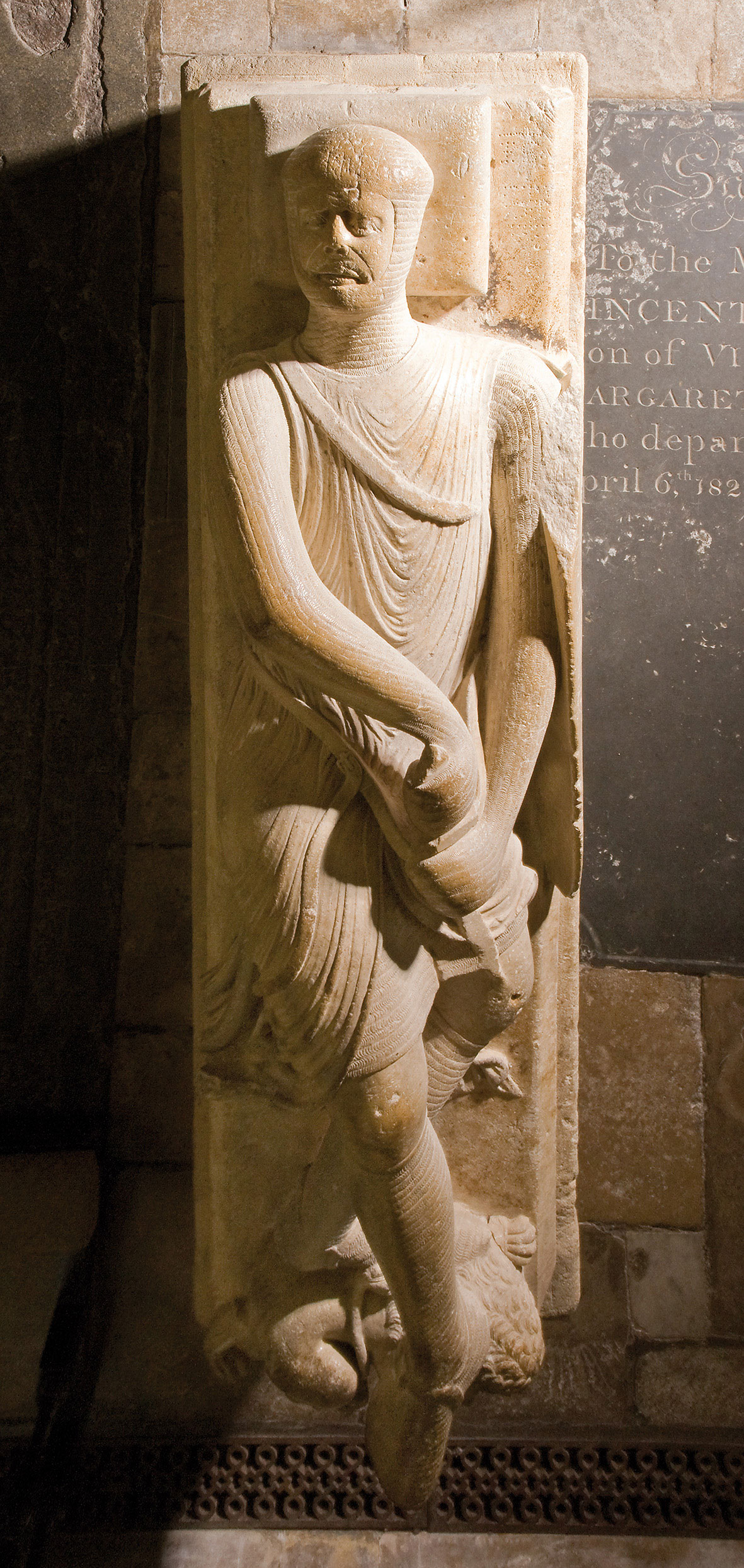
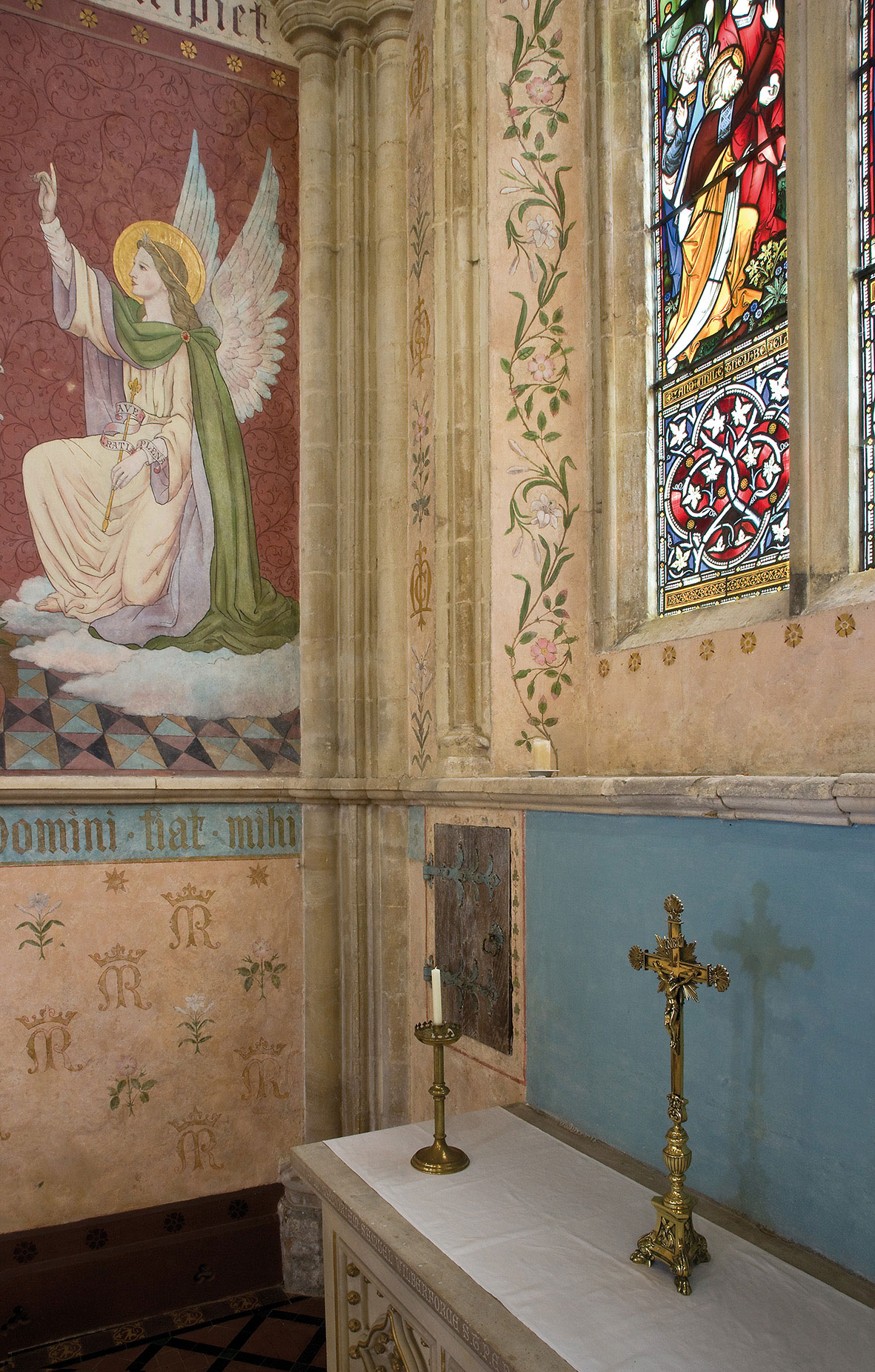
The Lady Chapel
The decoration of the walls of the Lady Chapel was undertaken by Clayton and Bell and the painting of the Annunciation is a Pre-Reaphaelite painting by W.T Beane from 1894. The stone altar came from Dorchester Missionary College and commemorates Samuel Wilberforce, Bishop of Oxford 1845-1869.
The reredos is a more recent commission by local artist Rebecca Hind.
The Requiem Chapel
The reredos was designed for the Missionary College as a memorial to students killed in the First World War
A ‘Green Man’ – a pre-Christian symbol of rebirth and renewal – with foliage growing out of his mouth can be seen about the doorway in the corner of the chapel. The Union Flag was used in funeral services in the Kuching prisoner-of-war camp.
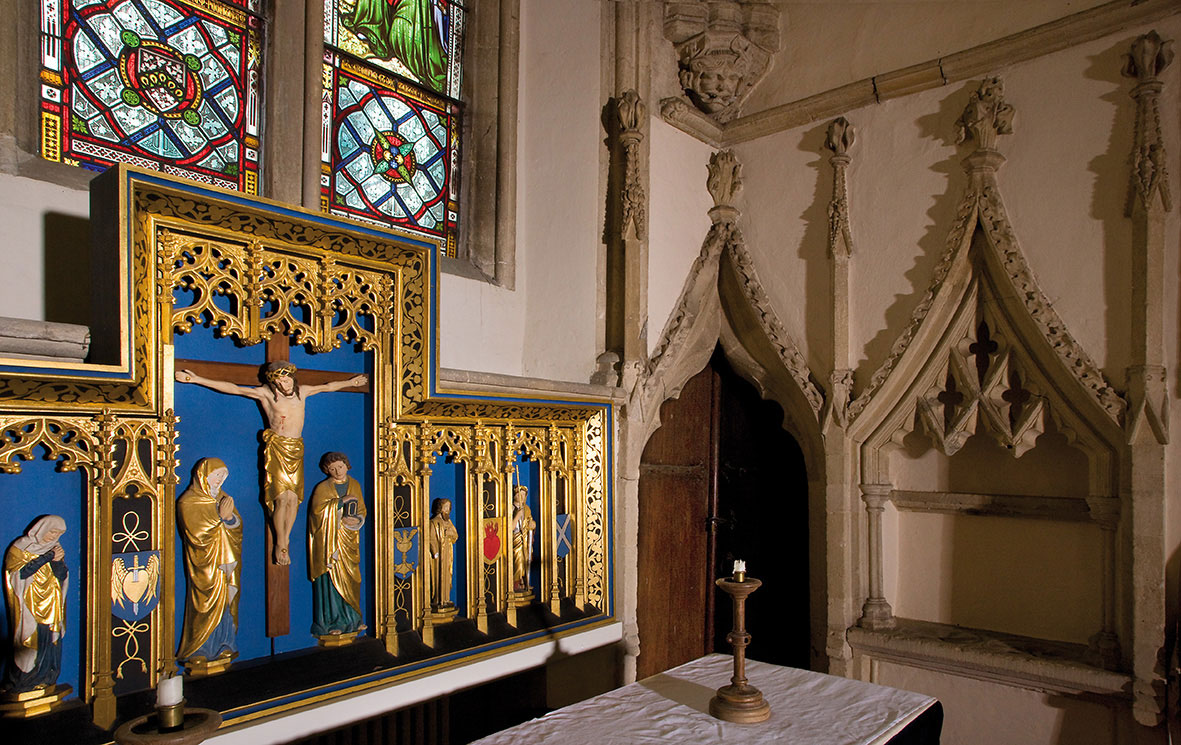
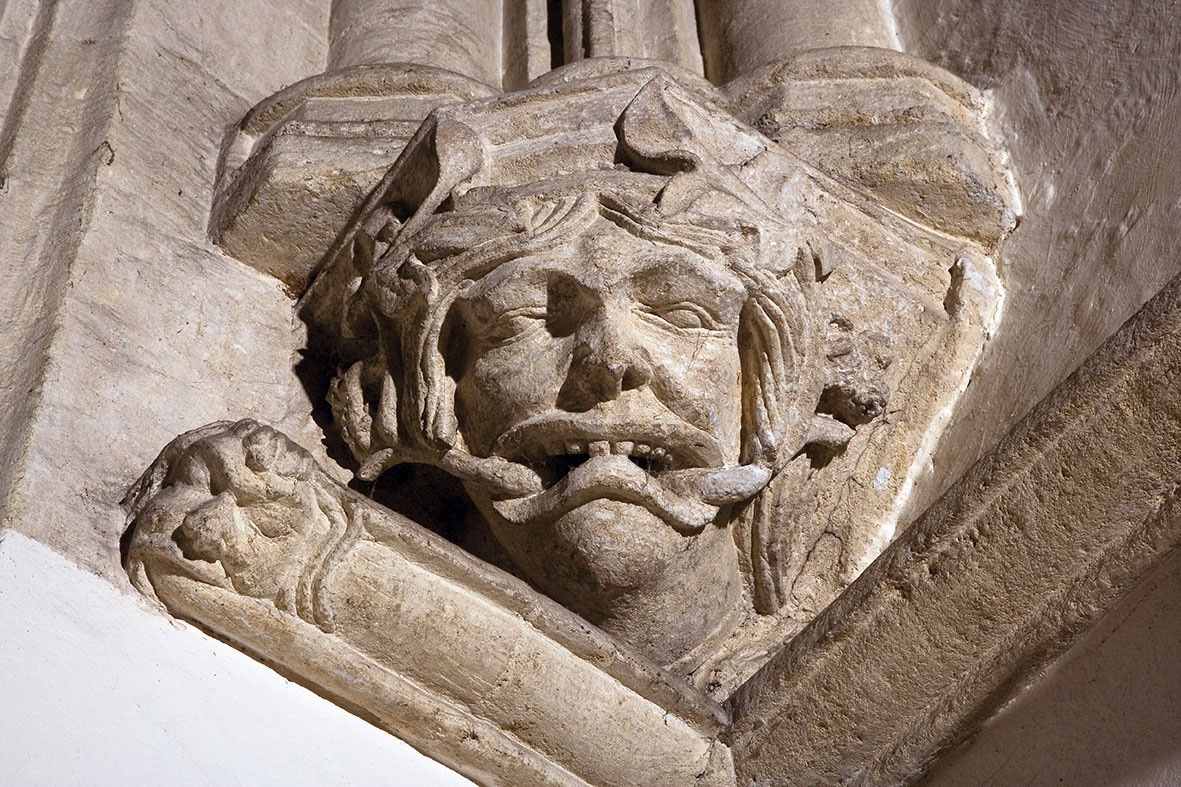
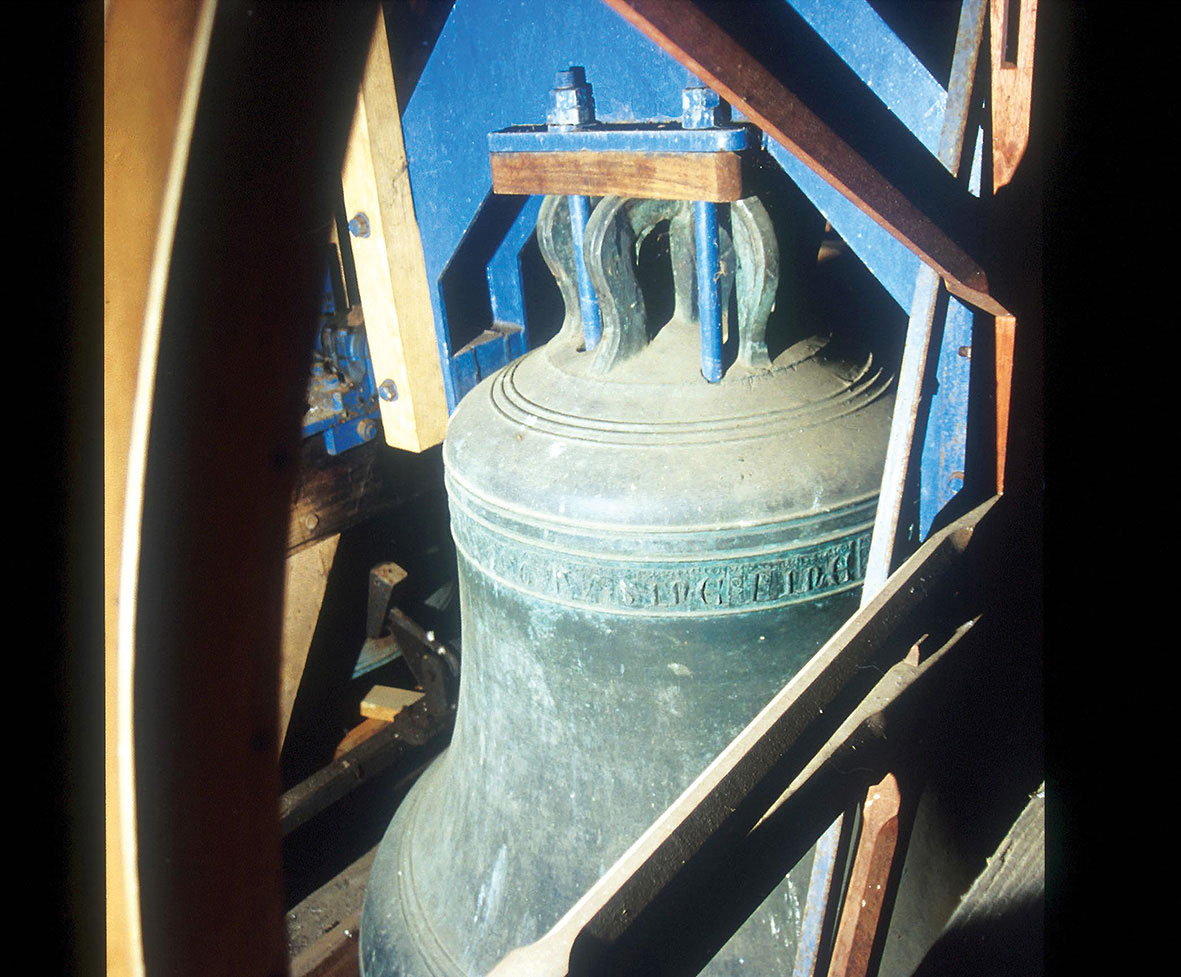
The Bells
High up in the tower, but not open to the public, are the bells. There are eight bells in all, the oldest cast in 1375, the youngest in 1867. The tenor bell (the largest) weighs more than 16 cwt (ca 840 kg) and carries the Latin inscription ‘Protege Birine quos convoco tu sine fine Raf Rastlwold’ (Do thou, Birinus, protect for ever those whom I summon. Raf Rastwold (the donor of the bell)).
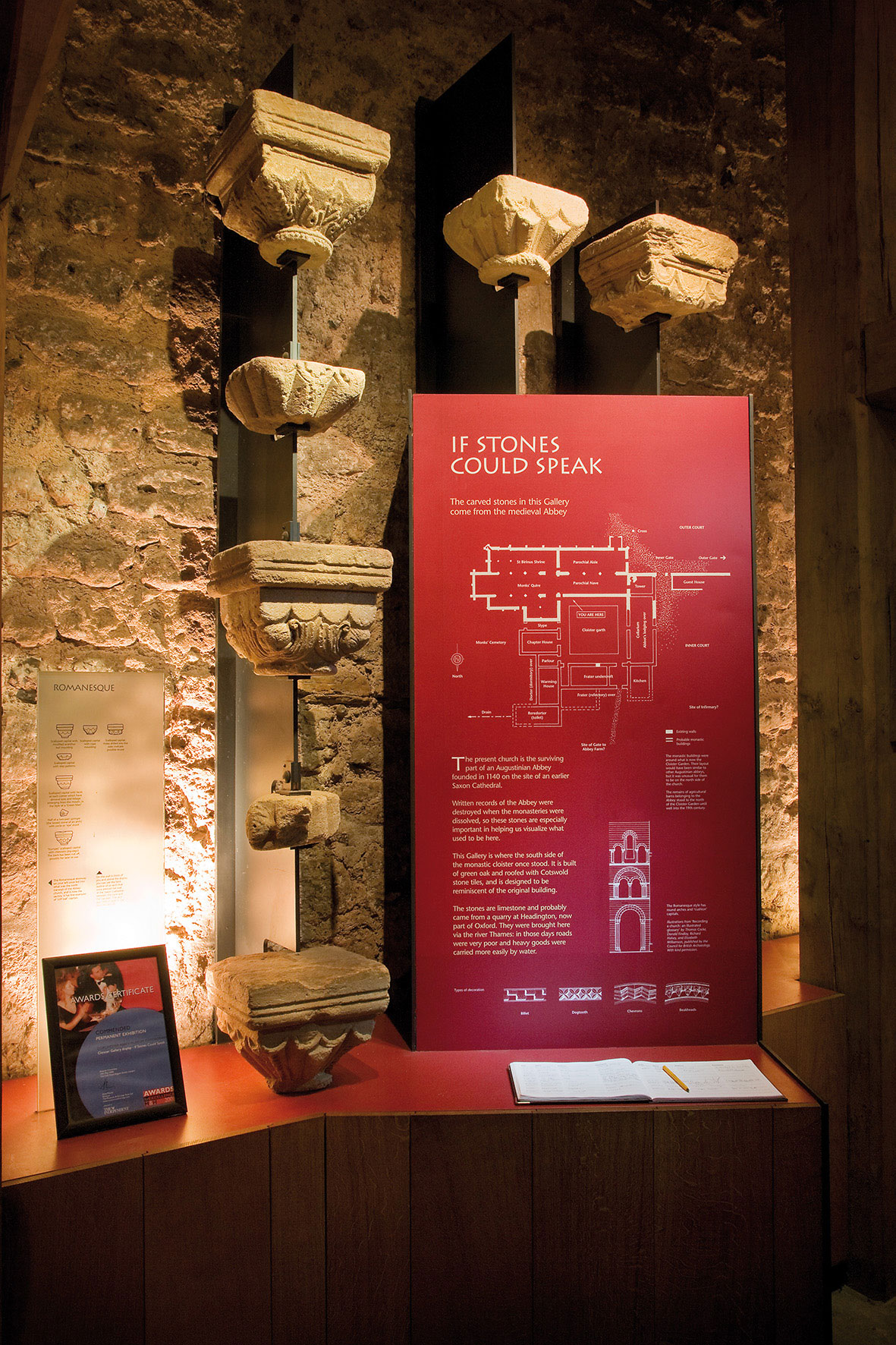
The pentice
The pentice was built against the north wall of the Abbey in 2001 to house the central heating plant, disabled toilet facilities and the Cloister Gallery. Designed by Peter McCurdy (who built the Globe Theatre in London) and Martin Ashley Architects, it captures the atmosphere of a medieval cloister through its massive framework of English oak, York stone floor and Gothic openings into the Cloister Garden. It houses the Cloister Gallery display of medieval worked stone which tells the story of the Abbey.


